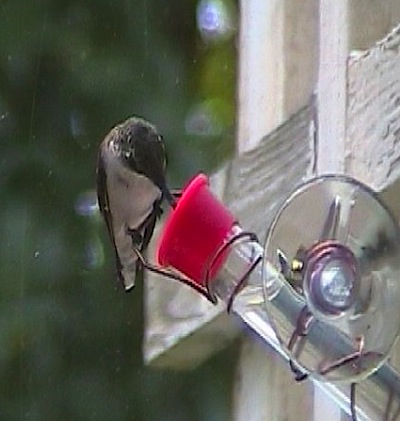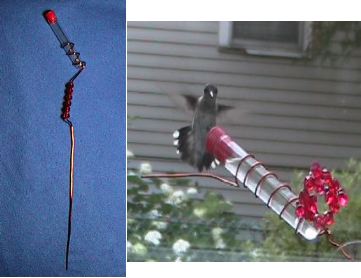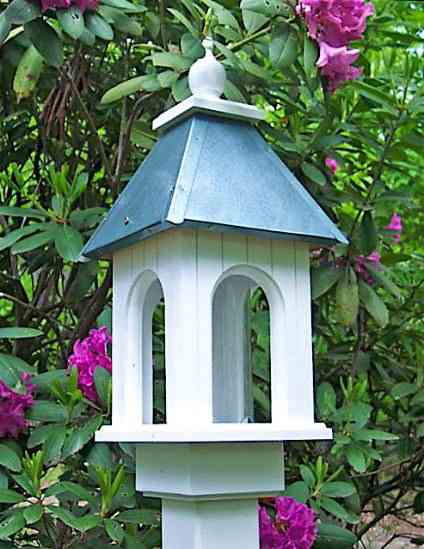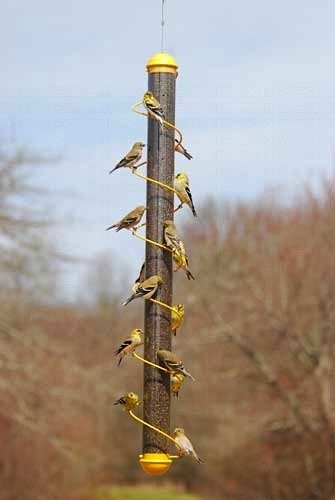-
window hummingbird feeder trains sprites for hand feeding!
 Sometimes it’s the tiniest things that can bear the biggest impact. Hummingbirds for example, are the smallest of beaked migratory visitors, but their performances are anything but small in stature! Putting on some of the greatest shows with their expert acrobatics and natural antics, it’s no wonder these tiny sprites continue to mesmerize and endear so many people.
Sometimes it’s the tiniest things that can bear the biggest impact. Hummingbirds for example, are the smallest of beaked migratory visitors, but their performances are anything but small in stature! Putting on some of the greatest shows with their expert acrobatics and natural antics, it’s no wonder these tiny sprites continue to mesmerize and endear so many people.Not too terribly shy either, once they become regulars at backyard fountains or feeders, and familiar with their hosts… they’ll buzz by so close you can feel the breeze from their speedy wings! It happened just today… while changing nectar in the window hummingbird feeder – her swift movement caused a swooshing breeze and a bass-like buzz that went right by my head… it made for a pretty magical experience!
Oh, and the tiny tube feeder on the window? It’s actually part of set that lets you train hummingbirds to eat from your hand (well almost). The idea is once they get used to the tubes, you sit quietly holding the feeder by the copper wand and the sprites come right up and eat – within twelve or so inches from you. One feeder is staked to set in a flower pot or plant, the other a window feeder. It’s actually pretty cool, but does require a little bit of patience. Training time may vary depending on how well your hummingbirds know you.
 A tiny little feeder set for some tiny birds that promise to bring some big amazement to your world!
A tiny little feeder set for some tiny birds that promise to bring some big amazement to your world! -
looks just like a copper bird feeder
 Two things a good feeder should do: feed the birds and last! Of course if it’s pretty and adds curb appeal, well… that’s a bonus!
Two things a good feeder should do: feed the birds and last! Of course if it’s pretty and adds curb appeal, well… that’s a bonus!An elegant and more economical option for a copper bird feeder would be a galvanized metal, or aluminum surface. With custom finishes that look like patina or bright copper, it’s hard to tell the difference. Aluminum won’t rust – think about an airplane? In the same durable vinyl/PVC, as our copper roof bird feeders, these gazebo styles will grace the landscape with simple elegance. Clean, architectural designs are pleasing to the eye and offer great functionality for feathered friends. Handcrafted in the USA, they’re built to last!
And speaking of economical, sometimes the cheapest seed is not always best! Stuffed with fillers like milo and millet, much of it is likely to end up on the ground as birds forage for the “good stuff”. Better off buying the good stuff in bulk quantity as it costs less per pound. Using a no-waste mix, or sunflower hearts will also eliminate ground mess below the feeder. Another benefit: premium seed reduces the risk of unwanted visitors! The best deal on this type of birdseed can be found at most feed & seed stores.
With all the rain we’ve had in the southeast, it’s common for birdseed that sits too long in feeders to become moldy… another waste of money. If birds aren’t consuming it quick enough – only fill the tube halfway. Better to make an extra trip to the feeder than to the trash! If it’s moldy, they won’t eat it, or if they happen to, birds will become sick with respiratory disease that spreads easily to the rest of the population around the yard. Often times, these diseases are fatal.
Your birds are waiting! So take 10 minutes to clean your feeder and fill with fresh seed 🙂
-
cool spirals on these big thistle feeders
 It’s a busy time for American Goldfinches as they have one of the latest breeding/nesting cycles of most backyard birds. They’re also one of very few breeds who actually molt twice a year and grow new feathers. Their electric yellow plumage is hard to miss, and most thistle feeders are seeing a good bit of traffic right now (provided the seed hasn’t gone moldy from all the rain). If yours is sitting with no takers – best to dump old seed, clean the feeder and replace with fresh thistle seed.
It’s a busy time for American Goldfinches as they have one of the latest breeding/nesting cycles of most backyard birds. They’re also one of very few breeds who actually molt twice a year and grow new feathers. Their electric yellow plumage is hard to miss, and most thistle feeders are seeing a good bit of traffic right now (provided the seed hasn’t gone moldy from all the rain). If yours is sitting with no takers – best to dump old seed, clean the feeder and replace with fresh thistle seed.Innovative by design with quality construction (no cheezy plastic parts here) these 36-inch tall, large capacity thistle feeders have a cool spiral instead of perches. Featuring more feeder ports, birds really do “run the spiral” hopping from one one port to the next. This opens up space for more birds to join the party, no more waiting around for an open perch to catch some chow!
Goldfinches feed babies thistle (or nyjer) exclusively. Gross as it sounds, parents chew and prepare the tiny black seed, regurgitating it into babies’ mouths. It’s not until juveniles are out in the world that they may start to discover and eat insects. There’s a kind and quiet demeanor about this favored songbird, you’ll rarely catch them squabble at feeders. Rather than fight for a spot, most will give up and maybe try again later. Hanging a few economical thistle socks helps to alleviate this problem during peak season.
In fall when they molt again, their vibrant yellow plumage will give way to new olive drab feathers for fall and winter. It may seem like your Goldfinches have gone on their way and migrated south, but they’re still around! Keep thistle feeders out year-round to accommodate these resident birds, (and fresh water in a bath) and next summer that lemon yellow color will once again grace your yard. So popular these birds are, there’s even a birdhouse modeled after one… although typically they do nest in hedges or trees.

